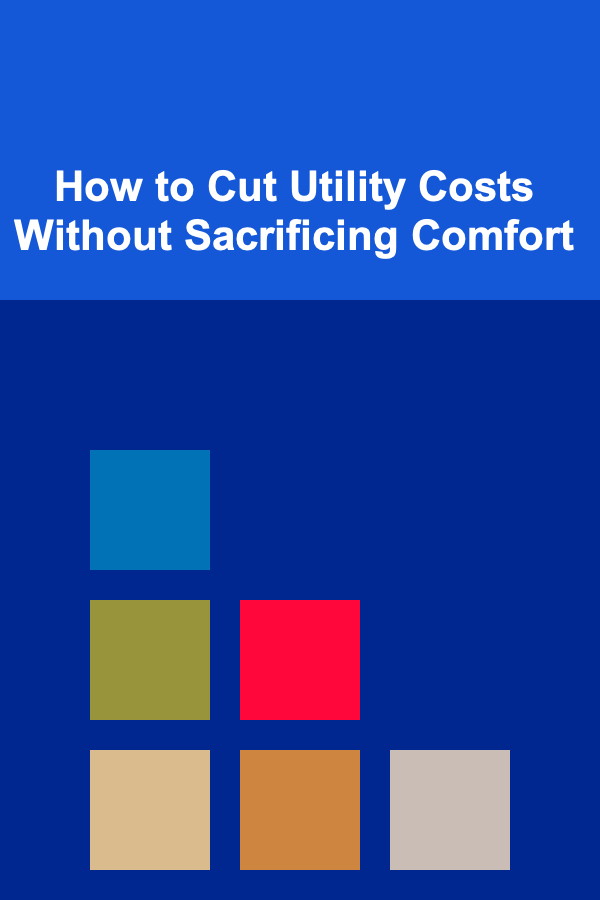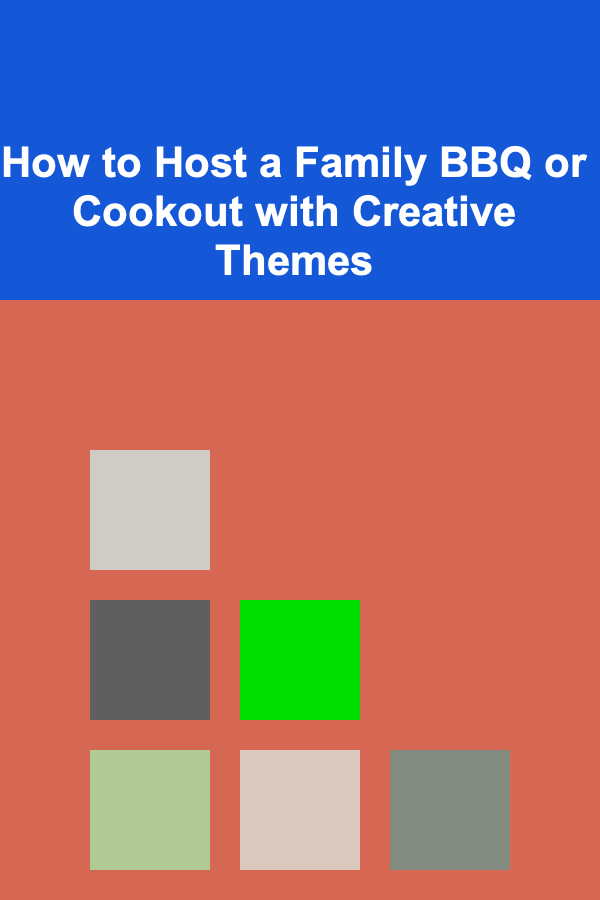How to Design a Study Tracker for Visual Learners
ebook include PDF & Audio bundle (Micro Guide)
$12.99$6.99
Limited Time Offer! Order within the next:
Learning styles are essential factors that influence how individuals absorb, process, and retain information. Visual learners, in particular, thrive when information is presented in a format that they can see and visualize. This may include diagrams, charts, videos, and other graphical representations. Designing a study tracker that caters to the unique needs of visual learners can significantly enhance their learning experience, helping them organize their study sessions more effectively and maximize retention.
In this in-depth guide, we will explore the best practices and strategies for creating a study tracker specifically designed for visual learners. From understanding the principles of visual learning to the tools and techniques for designing a tracker, we'll cover all the essential elements for crafting an efficient and engaging study tracker.
Understanding Visual Learning
Visual learning refers to the use of images, colors, charts, graphs, diagrams, and other visual aids to facilitate learning. People who are visual learners tend to process information better when they can see and manipulate it. This approach contrasts with auditory or kinesthetic learning styles, where the focus may be on listening or physical interaction.
Characteristics of Visual Learners
- Prefer Visual Aids: Visual learners excel when presented with images, diagrams, and other forms of visual representation.
- Good at Remembering Visual Information: They can easily recall information seen in charts, graphs, or diagrams, and associate details with images or colors.
- Strong at Pattern Recognition: Visual learners are often skilled at recognizing patterns and organizing information visually.
- Struggle with Purely Text-Based Content: They may find it challenging to process large volumes of text without visual support.
Understanding these characteristics is key to designing a study tracker that not only helps visual learners stay organized but also optimizes their learning experience.
The Importance of a Study Tracker for Visual Learners
A study tracker serves as an organizational tool to monitor academic progress, track assignments, and plan study sessions. For visual learners, a well-designed tracker goes beyond simple note-taking and adds visual elements to enhance comprehension and retention.
Benefits of a Study Tracker for Visual Learners
- Increased Organization: Visual learners benefit from having a clear, visually organized study schedule. Color-coded categories, progress bars, and charts make it easier to track assignments and deadlines.
- Improved Retention: By incorporating visual elements such as mind maps, graphs, and diagrams, visual learners can better absorb and retain information.
- Enhanced Motivation: Visual representations of progress, such as checklists or pie charts, provide a sense of accomplishment, which can boost motivation to keep studying.
- Customizability: A visual study tracker can be tailored to the individual's preferences, enabling them to focus on areas where they need the most support.
Key Features to Include in a Study Tracker for Visual Learners
To create a study tracker that resonates with visual learners, it's important to incorporate specific features that utilize visual cues. Here are the key elements to consider:
1. Color-Coding for Categorization
Color coding is one of the simplest and most effective ways to enhance a study tracker for visual learners. Different colors can represent different subjects, study priorities, or types of tasks.
How to Implement Color-Coding:
- Subject Colors: Assign each subject or course a specific color. For example, math could be blue, history could be green, and literature could be yellow.
- Priority Colors: Use colors to indicate the urgency of tasks. Red could mean urgent, orange could indicate medium priority, and green could indicate less urgent or completed tasks.
- Status Colors: Color coding tasks based on their status, such as yellow for tasks in progress, green for completed tasks, and grey for tasks that are yet to be started.
2. Visual Progress Tracking
Visual learners appreciate tracking progress in a format they can easily see and understand. Incorporating progress bars, pie charts, or visual checklists can motivate and help learners measure their success.
Ideas for Visual Progress:
- Progress Bars: Show the percentage of completion for each subject or task. This visual cue provides immediate feedback on how much work has been completed.
- Pie Charts or Graphs: Use pie charts to represent the percentage of time spent on each subject or the amount of homework completed. This can help identify areas that need more focus.
- Completion Checklist: A simple checklist with checkboxes that turn green when completed. This provides a satisfying visual cue of task completion.
3. Mind Maps and Diagrams
Mind maps and diagrams are excellent tools for visual learners to organize complex ideas and information. Using these visual representations helps them link concepts and see the bigger picture.
How to Integrate Mind Maps and Diagrams:
- Conceptual Mind Maps: For each subject, create a mind map that links major topics, subtopics, and relevant ideas. This can be a dynamic part of the tracker that changes as the learner progresses.
- Flowcharts: Use flowcharts to break down the steps involved in studying a particular topic, from reviewing the textbook to taking a quiz.
- Diagrams: Include simple diagrams that represent key concepts in the study materials. For example, biology students can use diagrams of the human body to understand systems or processes.
4. Task Breakdown with Visual Cues
Breaking tasks down into smaller, visually organized chunks makes studying more manageable for visual learners. Use grids, tables, or calendars to display daily tasks.
Task Breakdown Features:
- Weekly or Daily Schedules: Use a weekly or daily schedule to break down what needs to be done, with tasks highlighted using different colors for better visibility.
- Timelines: Create timelines that visually represent when each assignment or study goal needs to be achieved. Use arrows or icons to show milestones.
- Bullet Points with Icons: Use icons next to bullet points to indicate different types of tasks, such as a book icon for reading assignments, a pencil for writing tasks, or a clock for review sessions.
5. Multimedia Integration
Visual learners tend to benefit from multiple types of media. Integrating videos, images, and links into a study tracker allows them to engage with content in different ways.
Multimedia Features:
- Video Links: Embed links to instructional videos or online tutorials that complement their study material.
- Image Integration: Include relevant images that support learning, such as historical photos, scientific diagrams, or maps.
- Audio Cues: Add audio notes or reminders to certain tasks, which can be especially useful if the learner also benefits from auditory cues.
6. Gamification Elements
Incorporating gamification into the study tracker can increase engagement and motivation. Visual learners, in particular, benefit from visual rewards and progress markers.
How to Implement Gamification:
- Badges and Rewards: Set up a system where visual learners can earn badges for completing tasks or achieving study goals.
- Scoreboards: Use a scoreboard to track cumulative points or achievements over time.
- Level Progression: Create a "level-up" system, where completing certain study goals allows the learner to "level up" and unlock new study challenges or rewards.
Tools for Creating a Visual Study Tracker
Now that we understand the key features, let's look at some tools that can help you create a visual study tracker that caters to visual learners:
1. Digital Tools
- Trello: A highly visual project management tool that uses boards, lists, and cards to organize tasks. Trello is ideal for tracking study goals, and you can easily color-code cards and add images or videos.
- Notion: Notion allows you to build custom databases, calendars, and to-do lists. It's perfect for creating a personalized study tracker with embedded images, videos, and links.
- Google Sheets/Excel: For those who prefer something simple and customizable, Google Sheets or Excel can be used to create tables, color-coded sections, and progress bars.
- Evernote: Evernote allows for note-taking and organization, and it integrates images, audio, and web clippings into study notes, making it a useful tool for creating a multimedia-enhanced study tracker.
2. Physical Tools
- Bullet Journals: For those who prefer analog tools, bullet journals offer flexibility in creating a visual study tracker. The combination of grids, colors, and icons allows learners to craft a visually stimulating study plan.
- Whiteboards or Corkboards: A physical board where students can use markers, sticky notes, and pins to visualize their study tasks and progress.
- Planners with Visual Sections: Many planners feature customizable sections that include space for color coding, tracking progress, and writing notes, making them great for visual learners.
Best Practices for Using a Visual Study Tracker
Once you've designed your visual study tracker, it's important to implement some best practices to ensure maximum efficiency:
- Consistency is Key: Keep your color coding, icons, and layout consistent across all subjects to avoid confusion.
- Regular Updates: Update your tracker daily to reflect completed tasks and any changes to upcoming deadlines.
- Break Tasks into Smaller Segments: Avoid overwhelming yourself with large tasks. Breaking them down into manageable chunks with visual markers will make the process feel less daunting.
- Review and Reflect: Set aside time at the end of each week to review your tracker, evaluate your progress, and make adjustments as necessary.
Conclusion
Designing a study tracker for visual learners requires a deep understanding of how they process information and what motivates them to stay organized and focused. By incorporating key features like color coding, visual progress tracking, mind maps, multimedia, and gamification, you can create a study tracker that maximizes their learning potential. Whether you're using digital tools like Notion or Trello or opting for more traditional methods like bullet journals, a well-designed study tracker can enhance productivity, increase engagement, and ultimately improve academic performance.
Reading More From Our Other Websites
- [Personal Care Tips 101] How to DIY Natural Face Masks for Specific Skin Concerns
- [Personal Finance Management 101] How to Maximize Your Credit Utilization Ratio for Financial Freedom
- [Soap Making Tip 101] Best Soap‑Making Practices for Reducing Water Waste at Home
- [Rock Climbing Tip 101] Top Must-Visit Rock Climbing Spots Around the World
- [Organization Tip 101] How to Create a System for Managing Mail and Paperwork
- [Home Staging 101] How to Enhance Security and Style When Staging a Front Door for Added Appeal
- [Home Family Activity 101] How to Plan a Family Photo Scavenger Hunt
- [Home Rental Property 101] How to Deal with Difficult Tenants Without Losing Your Patience
- [Personal Financial Planning 101] How to Maximize Your Returns with High-Yield Savings Accounts in Today's Market
- [Home Soundproofing 101] How to Use Curtains and Blinds to Minimize Noise

DIY Hacks for Saving on Household Cleaning Products and Reducing Waste
Read More
How to Cut Utility Costs Without Sacrificing Comfort
Read More
How to Host a Family BBQ or Cookout with Creative Themes
Read More
How To Encourage Chores and Responsibility
Read More
How to Deal with Workplace Bullying
Read More
Yoga for Healthy Aging: A Comprehensive Guide
Read MoreOther Products

DIY Hacks for Saving on Household Cleaning Products and Reducing Waste
Read More
How to Cut Utility Costs Without Sacrificing Comfort
Read More
How to Host a Family BBQ or Cookout with Creative Themes
Read More
How To Encourage Chores and Responsibility
Read More
How to Deal with Workplace Bullying
Read More